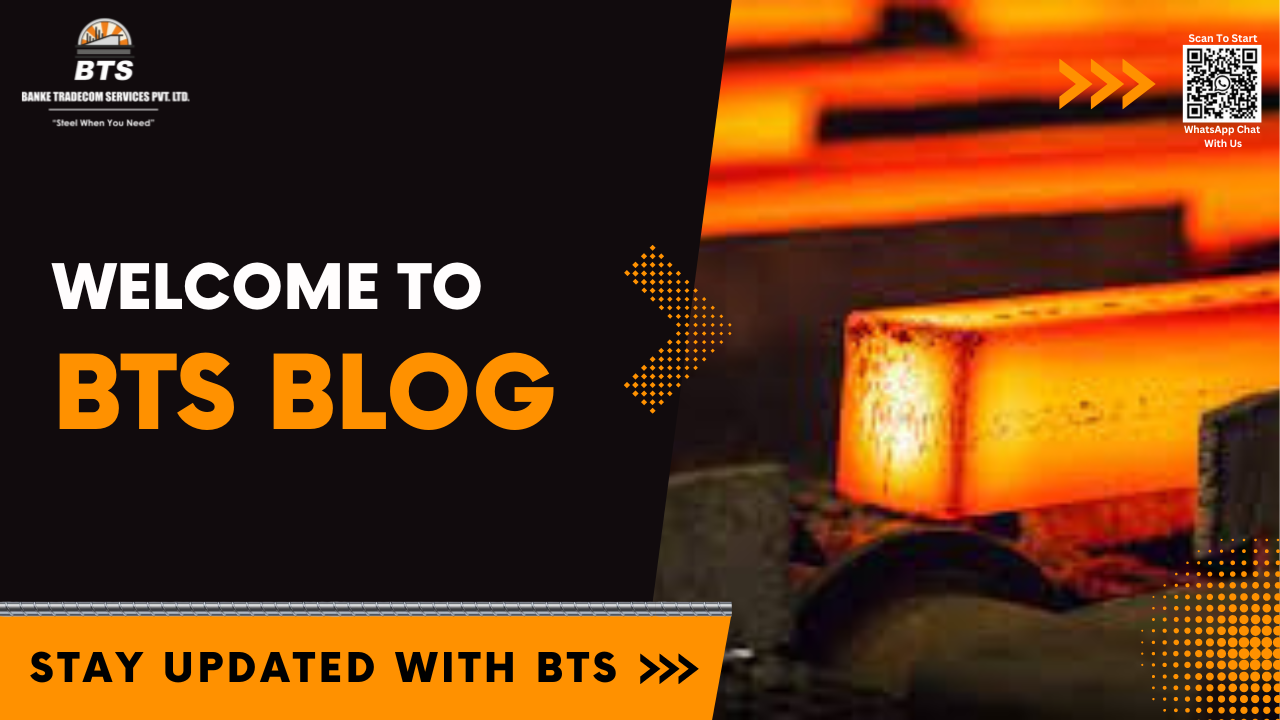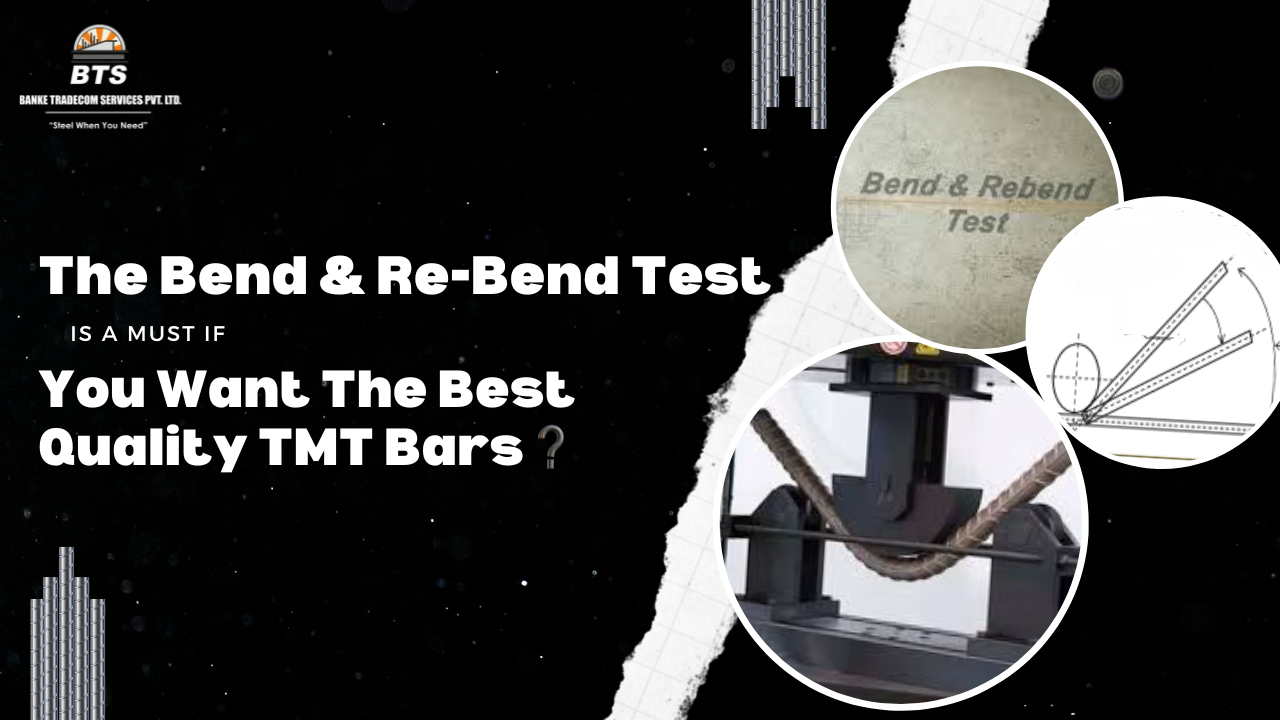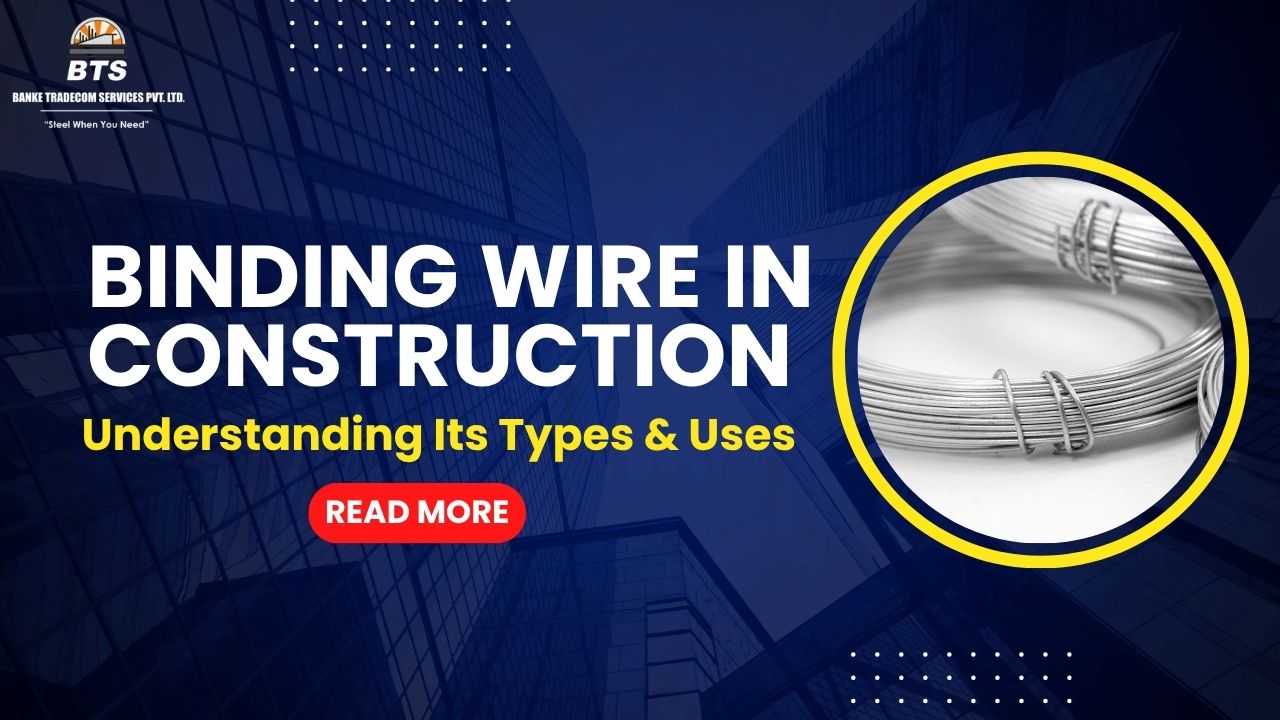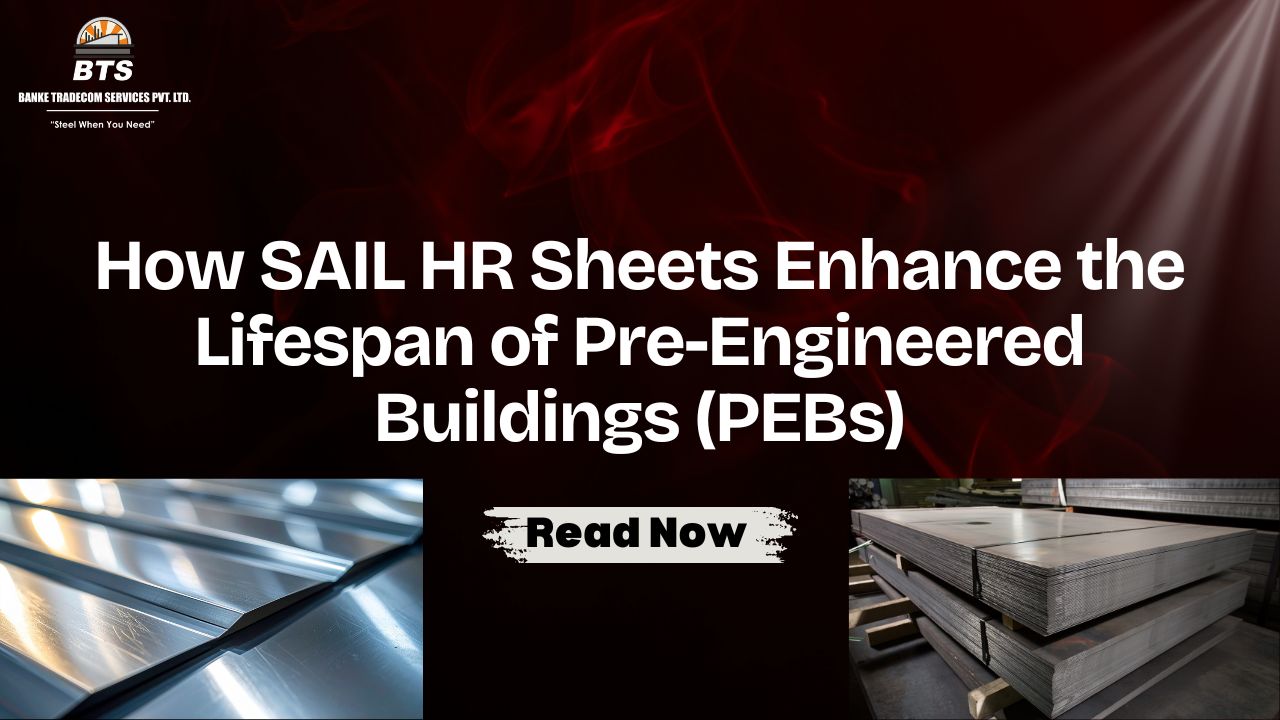Thermo Mechanically Treated (TMT) bars are the backbone of reinforced concrete construction due to their strength, flexibility, and corrosion resistance. Ensuring the quality of these bars is essential, especially for construction in dynamic environments, like earthquake-prone zones. One critical process that certifies their reliability is the bend and re-bend test, which assesses the strength, ductility, and overall resilience of TMT bars. Here’s an in-depth guide to understanding of these tests and why they matter for quality assurance, especially when selecting a reliable steel supplier in Raipur CG like Banke Tradecom Services Pvt Ltd.
What is Bend Test?
The bend test involves bending a steel bar to a predetermined angle to assess its ductility and resistance to cracking. The test is performed by bending the bar (usually to a 180° angle) at its midpoint using a mandrel of a specific diameter. This creates tension on the outer side of the bend.
What is Re-Bend Test?
The re-bend test assesses the bar’s ability to retain its strength and shape after being subjected to strain aging. In this test, the bar is first bent to an angle of 135°, then exposed to high temperatures (such as immersion in boiling water at 100°C for about 30 minutes) to simulate the aging effect.
Bend And Re-Bend Test Procedure
Bend Test
The bend test assesses the steel’s flexibility and ability to withstand bending without showing cracks or fractures.
- Equipment:
- Mandrel (a cylindrical tool used for bending the bar around a specific radius)
- Bend test machine as per IS 1599 standards.
- Process:
- The bar is bent to an angle of 180 degrees at its midpoint, causing tension along the outer curve of the bend.
- The mandrel diameter is chosen based on the diameter of the TMT bar and follows specific standards to ensure a controlled and consistent bend.
- Once bent, the steel is visually inspected for any visible cracks or fractures at the bend’s tension side (outer surface of the bend).
- Criteria for Passing:
- The steel bar passes the test if no cracks or fractures are visible on the surface, indicating that the steel can handle bending forces without breaking or weakening.
Re-Bend Test
The re-bend test evaluates the steel’s ability to withstand further deformation after the initial bend, ensuring it can resist strain aging and potential brittleness.
- Equipment:
- Mandrel, as per specified diameter standards
- Heat source (water bath) to heat the bar for strain aging simulation.
- Process:
- First, bend the TMT bar at a 135-degree angle using a mandrel.
- Place the bent bar in a boiling water bath at 100°C for 30 minutes, which accelerates strain aging effects by heating the bar.
- Remove and allow it to cool down to room temperature.
- Finally, bend the bar further to an angle of 157.5 degrees.
- Visually inspect the bar for any cracks or ruptures in the tension area.
- Criteria for Passing:
- The bar passes if it shows no cracks or fractures at the bend’s outer surface, indicating it can withstand additional bending forces and potential strain aging effects.
Standards for Bend And Re-Bend Test
The bend and re-bend tests are conducted according to the standards laid out in:
- IS 1599: General testing procedures for metallic materials.
- IS 1786: Specifies mandrel size and bending procedures for high-strength deformed steel bars and wires for concrete reinforcement.
These standards outline the procedures, equipment, and acceptable criteria to ensure accurate and consistent testing across manufacturers.
Purpose of Bend And Re-Bend Test
Bend Test
- Assess Ductility: The bend test determines the bar’s ductility—its ability to deform without breaking—by bending it to a specific angle.
- Check for Cracks: By applying bending stress, it reveals any cracks or fractures in the tension area of the bar, which would indicate a risk of structural failure.
- Quality Assurance: Ensures that the steel meets minimum ductility standards, which is crucial for maintaining the structural integrity in applications like beams and columns.
Re-Bend Test
- Evaluate Strain Aging: The re-bend test assesses the steel’s resistance to strain aging, a process that can cause brittleness over time due to exposure to heat or mechanical stress.
- Confirm Flexibility After Aging: By exposing the steel to high temperatures and then re-bending, this test ensures the bar retains its flexibility and does not develop weaknesses or cracks.
- Long-Term Durability: Guarantees that the steel will maintain its quality and strength over time, even in extreme conditions, making it safer for long-term structural use.
Tips for Performing The Bend And Re-Bend Test
- Bend Slowly and Gradually: Bending should be performed without rushing to prevent vibrations, which can skew results.
- Temperature Adherence: Maintaining precise temperatures, especially in the re-bend test, is critical as low temperatures can make steel brittle.
- Avoid Using Hammers: Using tools like hammers for bending is prohibited as it can damage the bar and affect test outcomes.
- Surface Cleanliness: Dirt, mud, or grime on the bar can affect results and should be cleaned off before testing.
Summary: Differences
| Aspect | Bend Test | Re-Bend Test |
|---|---|---|
| Purpose | Assesses ductility without fractures | Checks for strain aging resistance |
| Angle | 180 degrees | 135 degrees, then further to 157.5 degrees |
| Heat Exposure | None | Boiled in water at 100°C for 30 minutes |
| Pass Criteria | No visible cracks or fractures | No visible cracks or fractures |
About us-
At BTS, we stand out as the leading steel distributor all over India. Our decades of experience, in-depth industry knowledge, and customer-first approach make us the preferred choice for all your steel requirements of various brands like SAIL, Tata Steel, JSW, Jindal, JSPL, etc. We proudly deliver PAN India, ensuring timely and reliable supply wherever you are.
📞 Call us now to get a quote!
📍 Location: Raipur (CG)
📞Phone: 07712292080 | 07415009930 | 07415009931
✉️Email: sales@banketrade.in | steel@banketrade.in
🌐Website: www.banketrade.in 🌐Blog Site– https://blog.banketrade.in/
Stay Connected with Us on
FAQs
1. What is a bend test?
The bend test evaluates a TMT bar’s ductility by bending it to a specified angle, checking for fractures and other deformities that could indicate poor material quality.
2. Why is the re-bend test important?
The re-bend test assesses strain aging resistance, ensuring the steel retains strength even after bending and exposure to specific temperatures.
3. What TMT grade is best for earthquake zones?
Fe 500D is highly recommended for earthquake zones due to its optimal balance of strength and flexibility.




